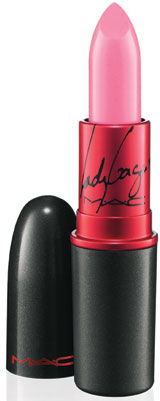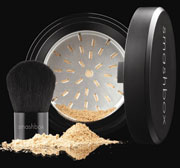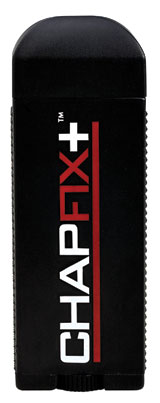Things started looking up in the beauty business for American retailers and suppliers in 2009 and into the beginning of 2010. Sales are not restored to the days before the recession hit, but there were glimmers of hope, says Faye Brookman
“The beauty shopper didn’t go away,” says Wendy Liebmann, founder of WSL Strategic Retail in New York. “They merely shifted or did without a few things.” She adds that a new breed of shopper has emerged and that merchants must respond. “Shoppers are now bloody minded, distrusting, practical, in control. Many have changed where they shop and how – first through necessity and now through choice. They have gone from regretting what they couldn’t afford to accepting what they can. Less is more now, and it’s OK,” Liebmann says.
To that end, speciality, mass and even dollar stores gained. But that’s not to say department stores didn’t keep a grip on a few categories. NPD reports US prestige beauty industry sales posted declines in 2009. Total US prestige sales dropped 6% versus 2009 to $8.19bn. The biggest drop for department stores was in fragrance, down 10%. Make-up and purchase with purchase items dropped 5% in sales. One last bastion of department stores is skin care where although sales declined 4%, department stores are still favoured for the majority of sales.
In the mass market, cosmetics sales rose 3% for the 52 week period ended 12 June 2010 to $4.33bn in food, drug and mass stores including Wal-Mart. The strongest subcategory is eye.
Fragrance Flounders
Fragrances are taking a hit because consumers are turning away from buying scents as well opting to buy them in other outlets. Department store fragrance sales totalled $2.48bn and account for 30% of the total US prestige beauty industry volume. Women’s fragrance juice sales of smaller sizes (1oz and under) worked for both men’s and women’s fragrances. Women’s fragrance juices under 1oz grew 8% in units. Looking at new smaller stock keeping units, the hottest products last Christmas included Harajuku Lovers Snow Bunnies and older fragrances such as Beautiful and Pleasures. Department stores also hit on something with unique delivery systems such as the Romance rollerball and solid perfume necklaces from Daisy. In men’s Polo Blue, Polo Black and original Polo were solid sellers.
The mass fragrance market fared only slightly better. Women’s did show some nice gains while men’s remains sluggish. Sales for the 52-week period ended 12 June 2010 actually notched up 1.8% in food, drug and mass stores including Wal-Mart, according the The Nielsen Company, from $675.3m last year to $687.7m this year. Buyers hope launches such as S from Shakira as well as other prestige fragrances adding mass distribution will fuel a sales resurgence.
Drug and discount stores have started taking action to bring fragrances out from under lock and key, which has been required because there is little or no service. Duane Reade opened a new style department called The Look with fine fragrances right at the forefront of the department. Meanwhile Wal-Mart uses multiple security tags to present its scents in an open sell format. Manufacturers such as Coty and Elizabeth Arden are working on new tools to halt theft. “We know that we sell much more fragrance that offsets the theft when we get the fragrances into shoppers’ hands,” says Joe Magnacca, president of Duane Reade.
| Table 1: US prestige beauty* industry, 2009 | |||
| Value | % share | % change 08/09 | |
| Total beauty | $8.19bn | 100 | -6 |
| Total fragrance | $2.48bn | 30 | -10 |
| Total skin care | $2.47bn | 30 | -4 |
| Total make-up | $3.16bn | 39 | -5 |
| PWP** | $83m | 1 | -5 |
| Source: The NPD Group/Beauty Trends *prestige beauty: fragrance, make-up and skin care products sold mainly in US department stores **PWP: product with purchase | |||
For both trade channels, the future is chock full of new celebrity launches. Mariah Carey has her new Lollipop Bling through Elizabeth Arden – three fragrances based on candy flavours. Shakira will shake into the market with S by Shakira, Beyonce heated things up with Heat, Mary J Blige hopped into the market with My Life, Halle Berry has her third launch called Reveal, Fergie signed with Avon and Katy Perry purrs into Nordstrom with Purr later this year. It has been a star-studded few years with others such as Sarah Jessica Parker and others debuting flankers to established hits. There were celeb options for men too, such as Tim McGraw, more Antonio Banderas launches and Usher. There seems to be no end to the celebrity launching pad.
Skin care sizzles
If there’s one category delivering decent customers for both mass and class it’s skin care. Department store sales declined for the first time in two years, but those declines were less than in other categories. Prestige stores did best with basic care skin care, specifically dedicated to sensitive skin.

Drug chains benefited from growth in professional skin care products
The mass market continues to find opportunities to trade shoppers up in skin care with products such as Olay Regenerist and Pro-X, which cracked new price points for retailers. Some of the products retail for as much as $40. Chains such as CVS and Duane Reade continue to boost apothecary style skin care selections from brands such as La-Roche Posay, Avene and Vichy. There’s also a bevy of new launches in acne as well as in men’s skin care. And drug chains in particular see growth with professional skin items such as those from AmLactin, Mederma and Eucerin. Meanwhile Estée Lauder’s GoodSkin Labs is tapping into professional trends and surgical demands with its range of topical products targeting particular skin problems. Products launched in the last year include Sculptinex Instant ReSculpting Face Treatment featuring a novel roller applicator. This contains Tensine and Resveratrol to help repair the look of damaged skin and prevent future damage caused by free radicals by helping the skin boost its natural collagen production. More recently came Filextra Facial Revolumising Treatment with Collagen, a moisturiser targeting ‘mid-face sink’, which can give a hollow, sunken and dull appearance to the cheek area.
US consumers continue to flirt with natural products, with many indicating they want to buy them, but surveys show some hesitation regarding product quality.
According to a report by market research firm Kairos Consumers, consumers in the US require more education about the benefits of organic and natural cosmetics to justify paying a premium price. The study, which comprised store audits and focus groups, found shoppers placed greater emphasis on performance than the safety and wholesomeness associated with organic and natural products.
Consumers’ better understanding of conventional claims, combined with their familiarity with mainstream labels mean they tend to favour traditional brands over niche natural and organic products, says Kairos.
Colour shy
Prestige cosmetics posted a second year of decline, off 5% in dollars to $3.16bn. However, gift sets had a 2% increase thanks to face-focused sets and minerals. There was a flood of new minerals into the market. The mass cosmetics market, however, also had its share of minerals, priced lower than department stores. 
Flat lip make-up and foundation sales were somewhat offset by a boom in the eye make-up sector
Still, food, drug and mass cosmetics sales were also down slightly. The only category outpacing others was the eye segment. Lash growers (such as Latisse which spurred a host of mass market over the counter knock-offs), lash enhancing mascaras and bold shadows paced sales. Eye make-up sales are more than making up for flat and declining lip and foundation make-up purchases, according to Mintel.Since 2004, eye make-up sales have increased 38%, compared to just an 11% increase in the colour cosmetics market overall. Mascara is one of the fastest growing segments in colour cosmetics, as 65% of respondents report using it.  Eye shadow and eye liner aren’t far behind; 63% of women surveyed use shadow and 62% use liner. Brow pencils are somewhat less popular, but still enjoy solid market penetration with 38% of women reporting usage. “The focus is now on more dramatic eyes,” says Kat Fay, senior beauty analyst at Mintel. “Mascara products are offering everything from serums to invigorate your natural lashes, to iridescent particles that reflect light to bring out a woman’s natural eye color. Retailers’ offerings seem to be working, as women report using mascara almost five times a week.”
Eye shadow and eye liner aren’t far behind; 63% of women surveyed use shadow and 62% use liner. Brow pencils are somewhat less popular, but still enjoy solid market penetration with 38% of women reporting usage. “The focus is now on more dramatic eyes,” says Kat Fay, senior beauty analyst at Mintel. “Mascara products are offering everything from serums to invigorate your natural lashes, to iridescent particles that reflect light to bring out a woman’s natural eye color. Retailers’ offerings seem to be working, as women report using mascara almost five times a week.”
| Table 2: US leading brands (by umbrella brand name), 2009, RSP | |
| Brand | Company |
| Colour cosmetics | |
| Cover Girl | Procter & Gamble Co, The |
| Gemey/Maybelline/Jade | L'Oréal Groupe |
| L'Oréal Paris | L’Oréal Groupe |
| Clinique | Estée Lauder Cos Inc |
| Revlon | Revlon Inc |
| Fragrance | |
| Estée Lauder | Estée Lauder Cos Inc |
| Avon | Avon Products Inc |
| Chanel | Chanel SA |
| Coty | Coty Inc |
| Giorgio Armani | L'Oréal Groupe |
| Hair care | |
| Pantene | Procter & Gamble Co, The |
| Clairol | Procter & Gamble Co, The |
| L'Oréal Paris | L’Oréal Groupe |
| Garnier | L’Oréal Groupe |
| Paul Mitchell | John Paul Mitchell Systems Inc |
| Men's grooming | |
| Gillette | Procter & Gamble Co, The |
| Axe/Lynx/Ego | Unilever Group |
| Old Spice | Procter & Gamble Co, The |
| Schick – Wilkinson Sword | Energizer Holdings Inc |
| American Crew | Colomer Group, The |
| Skin care | |
| Olay | Procter & Gamble Co, The |
| Neutrogena | Johnson & Johnson Inc |
| Proactiv | Guthy-Renker Corp |
| Clinique | Estée Lauder Cos Inc |
| Avon | Avon Products Inc |
| Source: Euromonitor International | |
Hair diversions
Hair care mimicked fragrance of 20 years ago. In those days, diverted fragrances started showing up at mass doors and eventually companies opened up the pipeline on their own. In that same vein, drug, discount and food stores sold diverted premium hair care such as Nexxus. 
French-born hairstylist Frederic Fekkai spoke to attendees at the National Association of Chain Drug Stores annual meeting about his line of hair care and styling products, now part of P&Gs brand portfolio
Eventually, the manufacturers also started a direct line into these doors. Now everything from Frederic Fekkai (now owned by Procter & Gamble) to Bumble and bumble (Estée Lauder) is offered at the local store rather than a salon. P&G even flew Fekkai to the National Association of Chain Drug Stores’ annual meeting to introduce Fekkai to the drug chain audience.Ethnic hair care sales appear on the upswing, buoyed by the presence of a black First Lady. Several companies are expanding their reach including a new launch from Laila Ali.
And men continue to be a hot new marketing opportunity with brands from Nivea to L’Oréal boosting men’s offerings. A small company even devised a men’s lip balm in a novel package that won’t bulge in men’s pockets. The item is called Chap Fix.
Acquisitions & styles
It was a big year for the compression of the business in both manufacturing and retailing. Shiseido made headlines with its buy of minerals hit Bare Escentuals. Meanwhile Smashbox was sold to Estée Lauder but Lauder shuttered its Prescriptives division in 2009. And L’Oréal made a huge foray into upscale nail polish with its buy of Essie.
into upscale nail polish with its buy of Essie.
At retail, Walgreens beefed up its number one store count in chain drug by purchasing Duane Reade, the leading Manhattan chain. With that buy, Walgreens also got instant access to one of the hottest new formats in mass retailing, Duane Reade’s update The Look boutique.
New store formats were ubiquitous in the US over the last year – perhaps a need driven by lacklustre sales. CVS continued to upgrade its beauty department and open more of its freestanding speciality stores called 360. Walgreens tweaked its new prototype called Customer Centric Retail initiative and Duane Reade bowed The Look Boutique, which is now being rolled out by Walgreens. Wal-Mart continued to reveal its Project Impact stores where the pallets of ‘stuff’ piled high at Wal-Mart have been replaced by streamlined end of aisle displays. Beauty has a whole new look at Wal-Mart complete with a faux wood floor and illuminated fixtures. Target has Destination Beauty with technology enhanced displays. Despite the new looks, most mass retailers continued with stock keeping reduction programmes to eliminate slow movers. At chains such as Walgreens, that has meant a decrease in the brands and choices offered.
Perhaps the biggest retrofitting news, however, was the pumped up makeover of Bloomingdale’s 59th street store. The department has video images flashing from every corner and there are plenty of interactive devices such as at Shiseido where monitors are activated to ‘tell’ information about an item when a customer removes a product form a pedestal. Across town, Saks completed phase two of its cosmetics overhaul with new and roomier quarters for beauty.

Novelties such as Chap Fix enlivened the male grooming sector
John Dupuis, president of Sheridan & Co, says beauty firms are taking a proactive approach in stores to make their brands stand out. His firm has worked with companies such as Laura Mercier and The Art of Shaving to focus on these brands’ core strengths and accentuate them at the point of sale. With the economy still tight, brands need to stand out in the store, explains Dupuis. For The Art of Shaving, Sheridan is working on a whole shaving experience department that can be constructed in stores.
Sears also made a return to a full-blown beauty department in the past year, the first since dismantling Circle of Beauty in 2001. And apparel retailers once again decided to give cosmetics a try. TopShop, H&M, Urban Outfitters and Forever 21 head the list of those adding private label cosmetic items as an avenue to boost cash register rings.
While Saks and Bloomies burnish their images at the high end, beauty also got a boost at the lower end. Dollar stores, especially Dollar General and Family Dollar, started adding more cosmetics as women looked to pinch pennies. L’Oréal and Maybelline opened up distribution to the better budget stores while Revlon has always had a small presence in some. Several former drug store executives now have posts at these chains and are making them look more like drug chains without pharmacies.
The future looks more productive for the beauty category as retailers learn to merchandise to the new realities. That includes consumers who are more willing to cross shop and trade down. Sephora has carved out a healthy wedge in the market, as has Ulta which continues to add premium brands. Now the mass merchants will have a crack at seeing if they can keep shoppers in their doors, even as the economic picture brightens.
